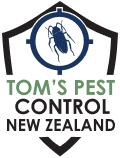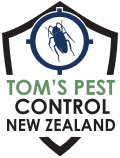These tiny creatures tend to nest beneath logs, woods, and debris, as well as in holes at the base of shrubs and trees. Their shallow nests typically aren’t more profound than 20cm and can also be found in soil.
Argentine Ants
The invasive Argentine ant is originally from Argentina, Paraguay, Uruguay, Bolivia, and southern Brazil. However, these persistent ants have spread globally, commonly found in South Africa, New Zealand, Japan, Australia, Europe, and the United States.
Argentine ants go through a complete metamorphosis like all other ant species. Their development time can vary depending on the temperature, but their eggs generally hatch within 28 days, and they reach adulthood in just 74 days.
Identification
Argentine ant workers are tiny creatures that range from light to dark brown and measure 2.2 to 2.8mm in length. You can often notice the organised trails of worker ants on your property. And, if you crush them, you might get a distinct musty scent.
Argentine queen ants can grow up to 6mm long, making them noticeably larger than their worker counterparts. Interestingly, while the workers have no wings, the reproductive ants may possess wings.
Female ants lay white eggs. These eggs hatch into larvae in 28 days and mature into adult ants within 74 days.
Signs of Ant Infestation
If you discover a broad ant trail, it may indicate an Argentine ant invasion. You may observe these little critters traversing up trees, scaling buildings, and even making their way into your abode.
Preventing Argentine Ants
Reduce the likelihood of ants invading your property with these simple precautions:
- Remove clutter from around your property, including unused building materials and piles of leaves.
- Keep firewood away from your home.
- Regularly trim bushes and trees as ants can use them to enter your home.
- Minimise moisture by avoiding overwatering plants, fixing any leaky pipes immediately, and ensuring gutters are working properly.
- Keep food sealed or refrigerated and avoid leaving leftovers on counters or tables.
- Seal any cracks or crevices in your home’s foundation promptly.
However, despite taking all these preventive measures, if you suspect ant invasion at your property, call a professional for an instant inspection.
Handover the Responsibility of Removing Ants to Us
At Tom’s Pest Control, we provide quality ant removal services. With us, you can expect 100% commitment to excellence. Our first step is to thoroughly inspect your property, locating all the colonies of Argentine ants hidden in various nooks and crannies.
Our team has long years of experience, and it knows exactly where to look for them. Based on our findings, we’ll implement effective ant removal strategies to eliminate these pests for long-term relief.
Trust our trained technicians to eliminate your ant infestation safely and effectively, even if you have pets and kids at home. We’ll ensure a thorough removal without causing harm to your family or property. Choose us for a worry-free solution, no matter how severe the infestation may be.
Call Us
Turn to Tom’s Pest Control for a fast and effective solution to ant problems. Our skilled team has the expertise and equipment to eliminate the problem in no time. You can contact us to address any worries or concerns.
We know how troublesome and nerve-wracking pests can be. That’s why we provide swift and efficient solutions every time. So, contact us to discover how our skilled pest control services can safeguard your home or business.
Frequently Asked Questions
Where can you find Argentine ants' nests?
Argentine ants prefer to construct shallow nests outdoors. They like to build their nest along sidewalks, buildings, and beneath plants, logs, and stones. They’re attracted to moist soil and land proximity to diverse food sources. However, homeowners should be careful. If these ants invade your house, they may create nests behind walls, large household appliances, or beneath floors.
What kind of threat can Argentine ants pose?
Argentine ants can pose a severe threat to public health. These pesky creatures can invade your home, yard and public parks in search of food and water. Furthermore, they scurry through garbage cans, sewers, and other unclean locations in their quest for their next meal.
These ants can carry harmful bacteria and viruses into your home. In addition, by tracking in dirt, they can spread diseases like salmonella and e-coli. Thus, don’t risk your well-being and take preventative measures to keep these pests out.
What do Argentine ants eat?
Argentine species of ants are omnivores and can eat anything they come across, but they have a particular fondness for sugary treats like candy and jam. So if you accidentally drop some of these food items in your home, you can see a trail of ants carrying this food to their nests.

